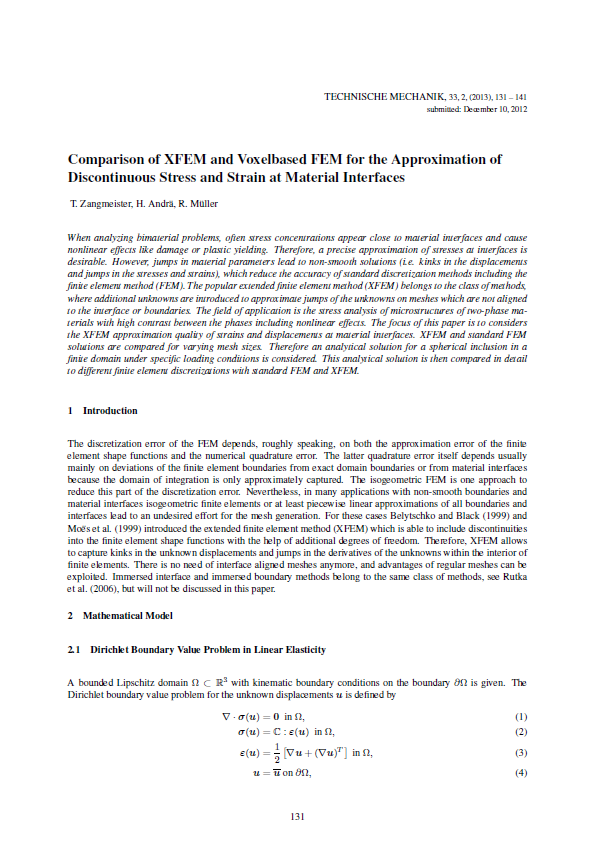Comparison of XFEM and Voxelbased FEM for the Approximation of Discontinuous Stress and Strain at Material Interfaces
Abstract
When analyzing bimaterial problems, often stress concentrations appear close to material interfaces and cause nonlinear effects like damage or plastic yielding. Therefore, a precise approximation of stresses at interfaces is desirable. However, jumps in material parameters lead to non-smooth solutions (i.e. kinks in the displacements and jumps in the stresses and strains), which reduce the accuracy of standard discretization methods including the finite element method (FEM). The popular extended finite element method (XFEM) belongs to the class of methods, where additional unknowns are introduced to approximate jumps of the unknowns on meshes which are not aligned to the interface or boundaries. The field of application is the stress analysis of microstructures of two-phase materials with high contrast between the phases including nonlinear effects. The focus of this paper is to considers the XFEM approximation quality of strains and displacements at material interfaces. XFEM and standard FEM solutions are compared for varying mesh sizes. Therefore an analytical solution for a spherical inclusion in a finite domain under specific loading conditions is considered. This analytical solution is then compared in detail to different finite element discretizations with standard FEM and XFEM.





